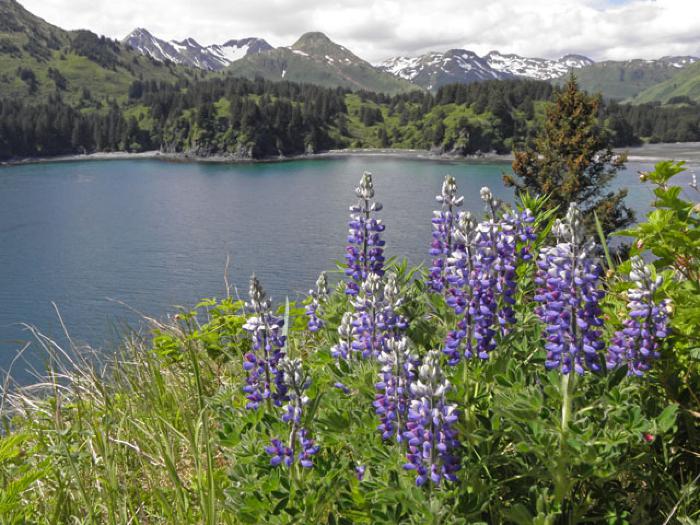Flower — Suit’kaaq

Each summer blue lupine, purple iris, lavender geranium, magenta fireweed, pink rose, yellow buttercup, and many other flowering plants flood Kodiak’s meadows with color. For Alutiiq people, however, wildflowers are more than a delightful reminder of summer. They are a source of information and a valuable natural resource.
Flowers help collectors judge the quality of plants. Many of Kodiak’s vegetables are picked before they blossom because their leaves and stems toughen and may become bitter with flowering. Beach lovage, cow parsnip, sourdock, and goose tongue are all gathered when they first appear in May and June. Later in the summer, families will only harvest the non-flowering stems of these plants.
Like many other plant products, some flowers are eaten. Elders report sucking the nectar from salmonberry flowers, eating the berry-like flowers of pineapple weed, and making tea from the petals of wild roses. Other flowers can be used as medicine. Alutiiq people administer a tea made of elderberry flowers, fresh or dried, to reduce fever and relieve flu symptoms. This tea induces a cleansing sweat. Flowers are also used in poultices. A poultice of dried hemlock parsley flowers (Conioselinum chinense) can be used to clean wounds, one of wild sage (Artemisia tilesii) can relieve hemorrhoids, and one of heated single delight flowers (Monese uniflora) can treat tumors.
